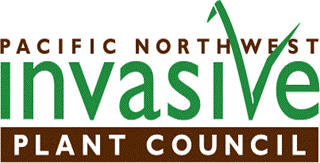

2012 Annual Report
WHO WE ARE
We are one of the four regional Plant Councils established through the National Association of Invasive Plant Councils. Originally formed as the Pacific Northwest Exotic Pest Plant Council (PNW EPPC) in December of 1993, the council was later revived and renamed in 2007 to be the Pacific Northwest Invasive Plant Council (PNW IPC) who we are today. The PNW IPC region includes the states of Oregon, Washington, and Alaska, and the Provinces of British Columbia and Yukon.
WHAT WE DO
Protect landscapes from invasive plants
The mission of the PNW-IPC is to protect the Pacific Northwest's land and waters from ecologically-damaging invasive plants through scientific research, education, policy, and an on-the-ground citizen science monitoring and eradication program.
OBJECTIVES
-
To facilitate communication and to promote collection and exchange of information regarding all aspects of invasive plant status, control and management;
-
To educate the general public and legislators on the environmental and economic impacts of invasive plants;
-
Organize and/or support invasive plant management research efforts;
-
To serve in an advisory capacity for the continued needs for funding, research, management and control of invasive plants;
-
To provide a focus for the issues and concerns regarding invasive plants;
-
To review invasive plant management problems and activities and provide updated information to interested parties;
-
To provide forums where interested parties may participate in and share in the meetings and benefits from the information generated and promulgated by this Council.
OUR FUTURE
-
Form working groups on particular taxa
-
Write grant proposals and coordinate distribution of funds to those working on projects
-
Hold regular conferences
-
Produce carefully evaluated lists of plants of concern in the region
-
Work with industries, such as the nursery industry, to prevent invasions through major pathways
-
Produce publications and educational materials that can be distributed through the network to a wide audience
-
Provide an early detection warning system (Early Detection Rapid Response, EDRR)
-
Coordinate regional mapping and control projects
-
Advocate for support at the local, state and federal level
-
Link agencies, universities, and NGOs